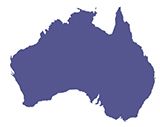 Six cadets from China Eastern Airlines and Xiamen Airlines last month completed work at Boeing’s training arm, Alteon, in Brisbane, in a Multi-Crew Pilot licensing program (MPL) that aims to revolutionize and streamline airline cockpit crew training to answer the forecast demand for pilots. Boeing and Airbus together currently have a backlog of more than 7,000 aircraft — all of them will need pilots at a time when the pilot population is expected to lose increasing numbers to age-induced retirement. To produce more airline pilots at a faster rate, MPL shifts training’s emphasis from flight hours directly to airline cockpit competency with a focus on cockpit resource management, critical thinking and risk management. Aspiring airline pilots in the 20-month trial program did not spend thousands of hours building their flight skills, working their way up from private, to instructor, to commercial aviator to airline pilot, but instead were “trained from day one for the job they will be doing in aviation,” Civil Aviation Safety Authority chief executive Bruce Byron told The Australian. MPL, now tested through two years, was on Dec. 19 endorsed by the International Civil Aviation Organization (ICAO) with rules and requirements that support the program. But because the program replaces what could be years of hands-on flying with simulator training and coursework, opponents say substantial concerns remain.
Six cadets from China Eastern Airlines and Xiamen Airlines last month completed work at Boeing’s training arm, Alteon, in Brisbane, in a Multi-Crew Pilot licensing program (MPL) that aims to revolutionize and streamline airline cockpit crew training to answer the forecast demand for pilots. Boeing and Airbus together currently have a backlog of more than 7,000 aircraft — all of them will need pilots at a time when the pilot population is expected to lose increasing numbers to age-induced retirement. To produce more airline pilots at a faster rate, MPL shifts training’s emphasis from flight hours directly to airline cockpit competency with a focus on cockpit resource management, critical thinking and risk management. Aspiring airline pilots in the 20-month trial program did not spend thousands of hours building their flight skills, working their way up from private, to instructor, to commercial aviator to airline pilot, but instead were “trained from day one for the job they will be doing in aviation,” Civil Aviation Safety Authority chief executive Bruce Byron told The Australian. MPL, now tested through two years, was on Dec. 19 endorsed by the International Civil Aviation Organization (ICAO) with rules and requirements that support the program. But because the program replaces what could be years of hands-on flying with simulator training and coursework, opponents say substantial concerns remain.
Supporters of the program say MPL’s specificity of design directly targets and develops those skills pilots need to have to operate in an airline environment. And opponents who say there’s no substitute for flight time may in the end be overruled by market forces. Workforce forecasts based in part on order backlogs at Boeing and Airbus suggest a strong demand for airline pilots over the next two decades. In 2007, Boeing’s forecast projected a need for more than 17,000 new pilots per year for the next 20 years. Alteon’s solution may not yet be optimal, but as job-focused training the company hopes it will prove to be an efficient and effective substitute to sending cadets off to train private pilots and then haul cargo in a 310 for a few years before being thrust into the cockpit of an airliner.


































